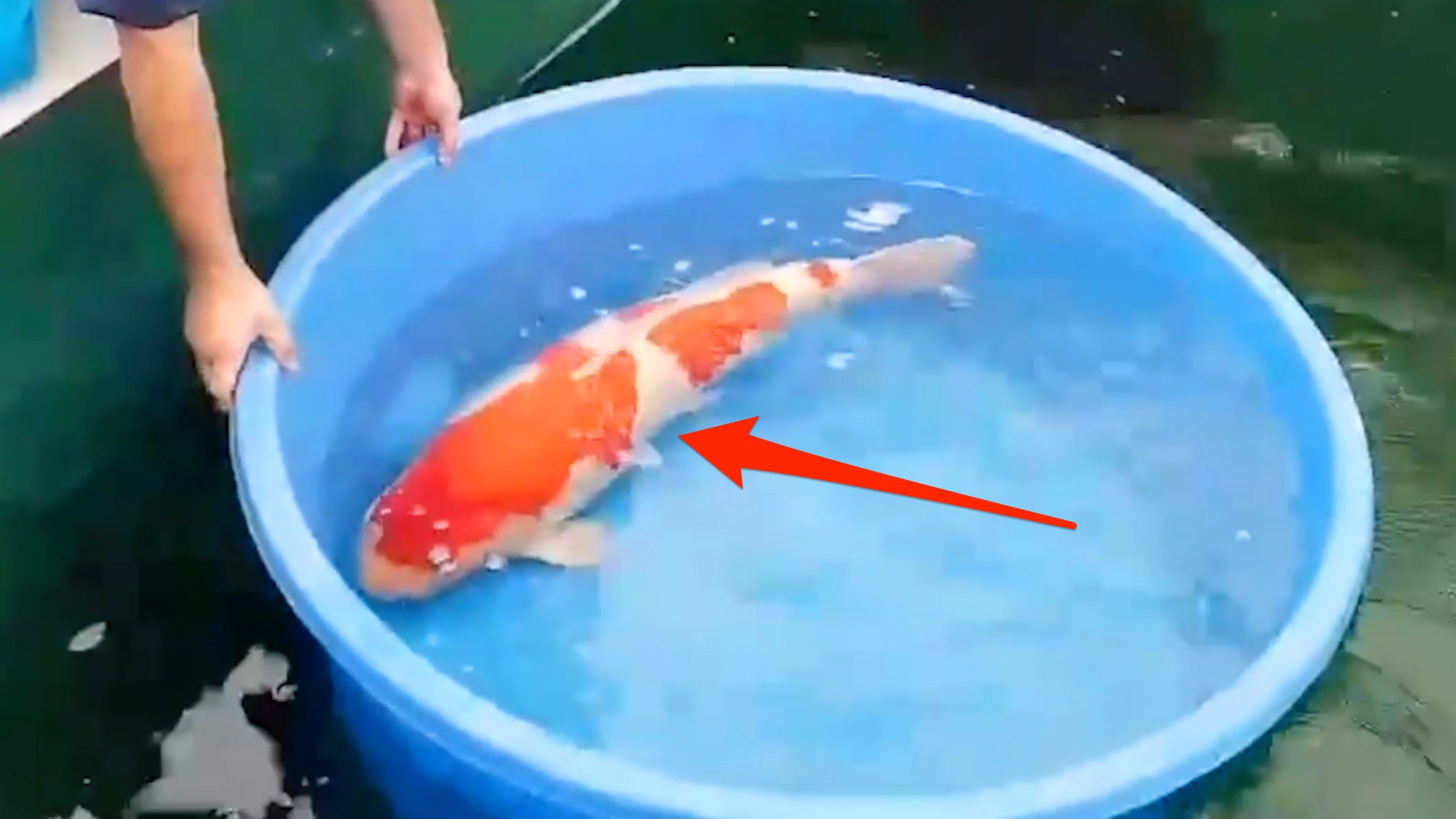- Koi fish can be worth millions – the most expensive koi fish ever sold was worth $1.8 million.
- Koi are a type of carp, a common fish that can be found all over the world, but what makes Koi so special is their coloring and lineage.
- There are regular competitions to name the top koi and just like prized dog breeds, Japanese people take koi breeding very seriously.
Anything strike you as special about this fish here? Well, it’s worth 1.8 million dollars. It won grand champion at the All Japan Koi Show in 2017, and is the most expensive koi fish ever sold.
Koi may just look like an oversized goldfish, but they’re not even remotely related. Koi are actually a type of carp, and today they’re some of the most expensive pet fish in the world. But why? Koi were originally raised in Japan in the 1700s when rice farmers first began breeding them for their distinct colors and patterns, similar to how we breed dogs for their specific traits. And just like prized dog breeds, Japanese people take koi breeding very seriously.
There are regular competitions to name the top koi. Judges and buyers pay attention to how healthy its skin looks, its size and body shape, and how gracefully the fish moves in the water. But the most important trait of all is the koi’s coloring. The best koi have a good balance of colors and patterns according to their variety. For example, there are koi with light blue spots, ones with large red patches on their backs, or all-metallic gold.
But the most winning fish often just boil down to these three varieties. They’re often the most valuable. They dominate the shows, winning nearly every major category each year. And the better-looking the fish, the more a buyer is willing to pay.
Yvo: Yeah, it depends. You can buy some small and cheap koi fish for a couple of bucks, but also, yeah, it can get up really, really high to thousands, ten thousands of dollars.
Narrator: That's Yvo de Wal. He's a koi hobbyist and seller in the Netherlands, and he heads up the YouTube channel Koi Partner. Each year he visits Japan to shop for koi.
Yvo: The breeders are located there, and they have experience with their bloodlines for many, many generations.
Narrator: You see, bloodlines are just as prized in koi as they are in dogs because some of these koi are the result of decades of selective breeding. I mean, just take a look at the koi's wild relative, the common carp. Its dark colors would be considered unattractive for a koi, but it's perfect protection against predators in the wild. So how do you get from this to this? Well, it's actually similar to how we got from this to this, except koi breeders mainly select for size and color and ignore... Fluffiness.
Koi have six types of color cells in their skin. Their cells can be red, yellow, black, white, blue, or metallic. Now in order to get a beautiful, reddish-orange pattern like the one on this 1.8 million dollar fish, you need to select for fish that have a white body and lots of red cells that concentrate in large patches. Red and white are important colors in Japanese culture, representing joy and purity. But having the right colors is only part of it.
A koi's color cells sit at different depths in the skin, some right near the surface and some deeper in, which ultimately determines how bright the fish appears. The brighter the fish, the bigger the price tag. Today there are about 120 varieties. To compare, there are about 200 breeds of dogs. But when it comes down to it, breeding koi is a lot harder. A single koi can give birth to hundreds of thousands of baby fish at a time.
Yvo: I think we are talking about millions and millions of fish per breeder.
Narrator: So breeders must choose wisely. One breeder, for example, reports that he starts with 3 million fish and selects 15,000 to raise over the first year. From that he chooses 1,000 to continue to raise the second year.
Yvo: Yeah, it's a really hard job for the breeders.
Narrator: But in the end, all that hard work is worth it. The breeder of this grand champion waited until she was nine years old to sell her at auction. And by bringing in a world record of 1.8 million, the breeder got not only a huge return on investment but a priceless reputation boost in the koi community.
